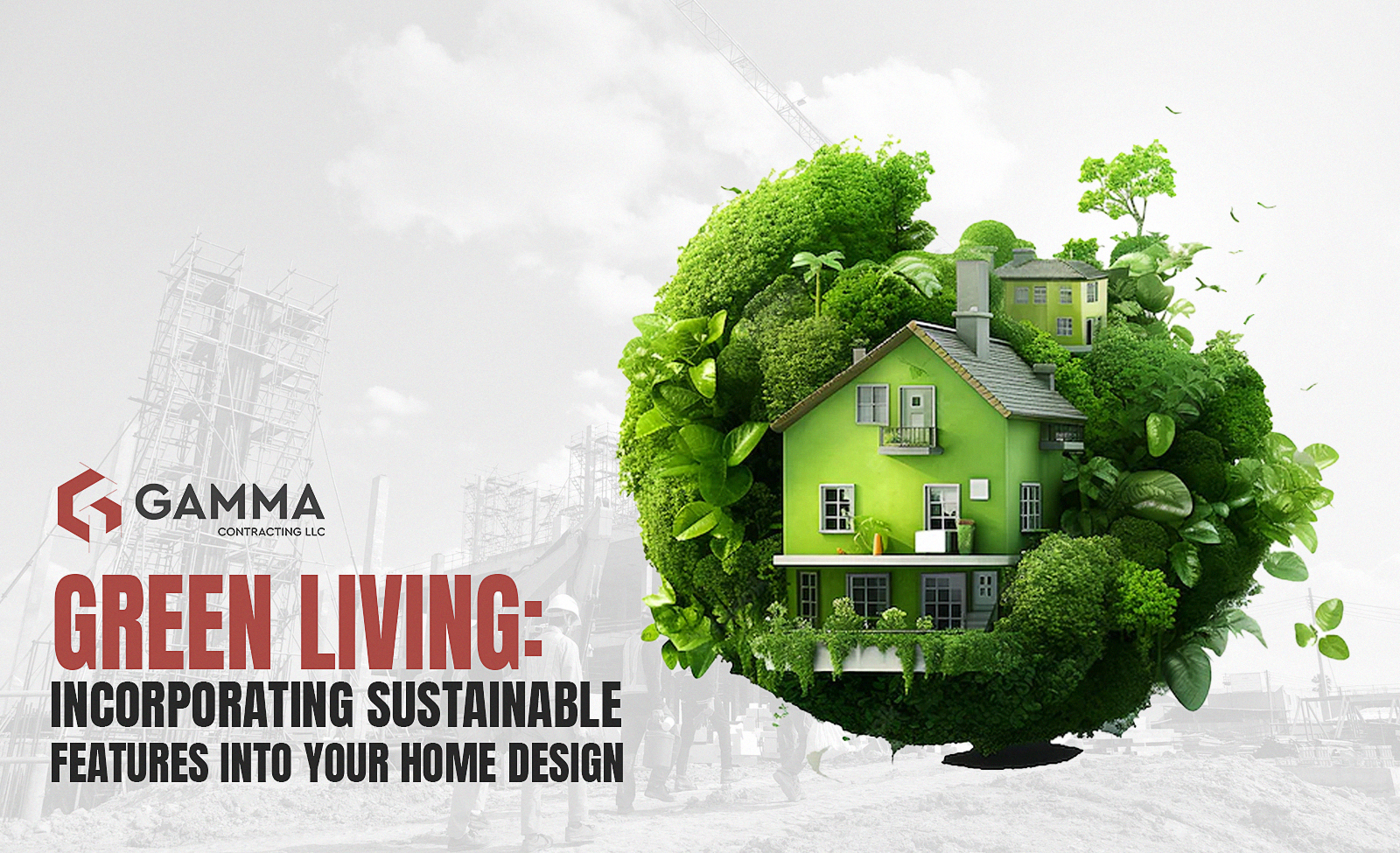
Green Living: Incorporating Sustainable Features into Your Home Design
Did you know that buildings and their operations cause nearly 50% of global CO2 pollution. People need to prioritise the sustainability of the environment, and sustainable design is essential now. Green living design and construction are expected to grow worldwide as people become more aware of the need to reduce their carbon footprint.
Due to the increased demand for sustainable design and building and material science advancements, you can quickly and affordably add sustainable design features such as green living room paint to your new home or home renovation. This piece will explore six ways to build an eco-friendly house.
6 Sustainable Features to Incorporate into Your Home Design
Creating a sustainable home design is environmentally responsible and beneficial for your health and finances. Let’s check out the below sustainable features.
Use Sustainable natural and recyclable products
Everyone wants to live in healthy and sustainable surroundings. One way you can do this is by avoiding artificial and dangerous toxins in your home. Carpets, for example, can off-gas harmful chemicals such as formaldehyde. You can reduce your exposure to these chemicals by replacing your carpets with bamboo or cork floors made from natural materials.
You can also reduce your environmental impact by using eco-friendly cleaning products. These products are made from natural ingredients, such as vinegar and baking soda, and they are not harmful to the earth or our family’s health.
Another way to live more sustainably is to use recycled materials. Reclaimed wood is an excellent example of this. It is made from wood salvaged from old buildings or structures. Using reclaimed wood helps reduce deforestation and saves energy, as it requires less processing than new lumber. Incorporating a green living room wall colour combination into your home design, along with sustainable materials, can create a harmonious and eco-conscious living space.
Use More natural lighting
A good floor plan can make your home feel brighter and more spacious and help save energy by using less artificial light.
You should consider the following:
- Use large windows for maximum natural light.
- Windows should be placed in rooms that require the most light, such as the kitchen, bathroom, and bedroom.
- Use small skylights or roof lights to avoid dominating the space.
- Curtains or blinds control light and heat in your home during the summer.
- Use More Green
Using low-emitting glues, seals, green living room paint and coats can improve air quality and aid individuals with lung problems in breathing. Another way to create a beautiful design is by using high-quality wood panels, eliminating the need for rough finishing materials and the usage of green living room wall colour combination.
Wood flooring has changed since the 1970s. They are popular in business areas as a stylish and eco-friendly alternative to painted walls. Wood siding is a renewable material that can be grown and recycled, unlike gypsum-based plywood. They can be fire-free and bug-proof when protected and cared for.
In green living farm settings, wood flooring can create a cosier and more personal atmosphere, adding warmth and character to significant agricultural buildings that might otherwise feel cold and lifeless. Additionally, acoustic panels can play a crucial role in reducing noise and high frequencies, allowing green living farm tenants to relax and work better while fostering a sustainable and environmentally friendly environment.
Air Sealing is an integral part of a sustainable feature
Air sealing, also known as stopping drafts, is associated with insulation. Air conditioning can make a home more energy efficient, but it needs to be noticed. Air cannot escape when your house is sealed correctly. Make sure cool air isn’t running from your home. If cold air can get in through the cracks and holes in your walls, what good is all that insulation?
Seal all the holes in your roofs and walls. Air should be sealed around windows, doors, vents, electrical lines, and other gaps or penetrations. These should be filled well using glue or other methods. We recommend using closed-cell spray foam insulation. It keeps the building warm and seals gaps, small holes, and cracks by expanding. The quality of the structure affects air protection. Hiring good builders is essential for building lasting homes.
A blower door test shows how well a house seals off air. With this test, you can determine if and how much air leaks from your home.
Insulation Is also essential
The R-value measures how well a material retains or releases heat. R-value and resistance are the same thing. A building with more insulation has a higher R-value. Ascertain that your home has the appropriate R-value for your location. Insulation comes in a variety of forms and uses. We discuss all the choices with our clients when planning a house. Explaining the importance of insulation and the different types available is helpful.
You must meet the basic insulation requirements if your area has energy rules. The Gamma Group exceeds code insulation requirements when building green or sustainable homes. Insulating your house well is essential for energy efficiency. Heating and cooling use the most energy on your energy bill and better insulation results in less energy usage.
Design For Waste Reduction
Interior designers can reduce waste and have a responsibility to prioritise the environment. The world has limited and valuable resources. Throwing away things when they go out of style and replacing them with new ones is not acceptable.
Designers recognise sustainable thinking’s importance, and sustainable practises like reusing, upcycling, and reworking are popular. Designers should think of creative ways to give old-fashioned things that still work a new life instead of throwing them away.
Interior designers can help conserve natural resources and reduce landfill waste by selecting synthetic materials made from recycled waste that can be renewed or reclaimed when they are no longer helpful or desired.
Garbage becomes raw material for new goods with the cradle-to-cradle method. This creates a loop in manufacturing that reduces or eliminates waste.
Conclusion
In conclusion, embracing sustainable features in your home design is eco-conscious and budget-friendly. With growing awareness of environmental impacts and material advancements, it’s easier than ever. From natural materials to energy-efficient designs, every step counts. Partnering with experts like Gamma Group ensures seamless integration.
So, take a step towards an eco-friendly future with a sustainable home. Make your house a haven for both your family and the planet. Connect with Gamma Group today to start your green living journey.








No Comments